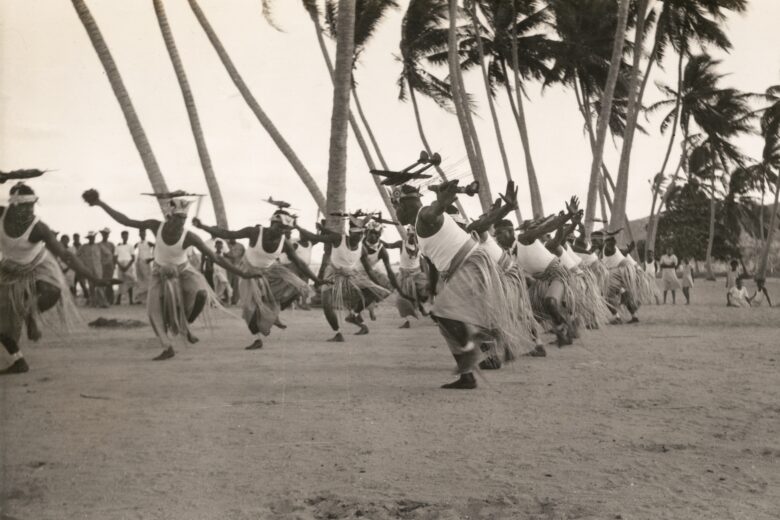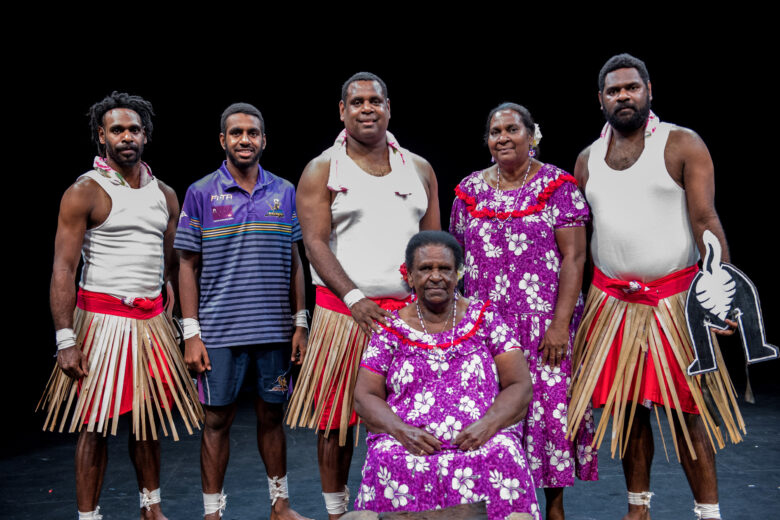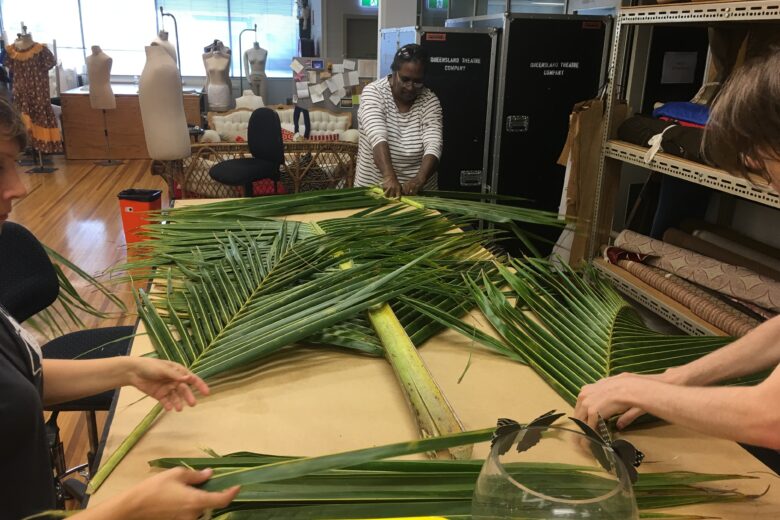Zazi grass skirt creation process for OTHELLO

When Jimi Bani and Jason Klarwein infused the narrative of Shakespeare’s Othello with the history of the Torres Strait during WW2 we turned to our costume design due Simon Cosentini and Simone Tesorieri for ideas on how to seamlessly intertwine the two visually through the wardrobe of the cast.

“The first thing that we saw on the script was the way they used language. Two different kinds of language which was, the Shakespeare kind of language from one side, and on the other side was the Yumpla Tok kind of language… It was very interesting how those two languages blended in the script, and we were thinking maybe we could do the same kind of thing with the costumes. We have a very traditional uniform from the 40s, from one side, and from the other side we have a traditional dress code for the warriors” — Simone Tesorieri, costume design

This was not the first time our wardrobe team had been presented with a costume design featuring traditional dress codes from the Torres Strait. In 2017, we were preparing to bring My Name is Jimi to the stage — a fresh new work starring Jimi Bani and four generations of his family, helping him spin yarns, traditions and childhood memories from the Torres Strait. It was during this season that Jimi’s mother and grandmother Agnes Bani and Petharie Bani gave our wardrobe team a visit to teach them the correct way to make a zazi — the name for the style of grass skirt worn by members of the Bani family.

The process involves stripping fresh fronds from the branches of a coconut palm tree (don’t ask us where we managed to find these in Meanjin 😉). The fronds are then boiled, hung out to dry and boiled again to ensure all the sap is removed from inside the leaves. It’s at this point in the process that the leaves change their colour from green to vivid yellow, and the whole wardrobe department smells deliciously of coconut palm oil. The dried leaves are then wiped down, ironed and stitched together with red fabric. It’s a long process, but one that’s worth it to authentically capture and share the traditions of the Torres Strait Islander communities with our audiences.





A huge thank you to the Bani family for sharing these processes with us and to our wardrobe team for their constant work to help make our designers' visions a reality.